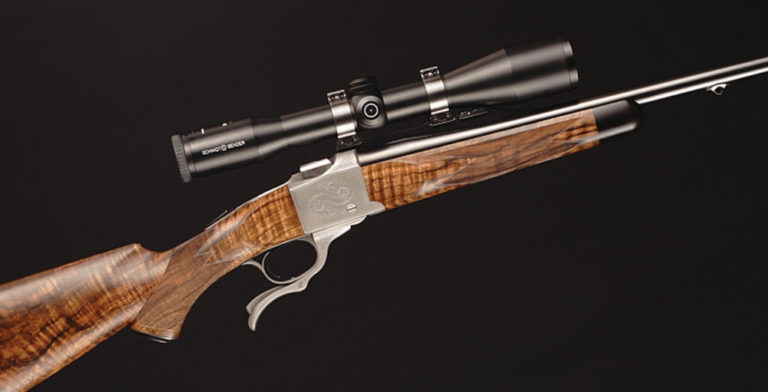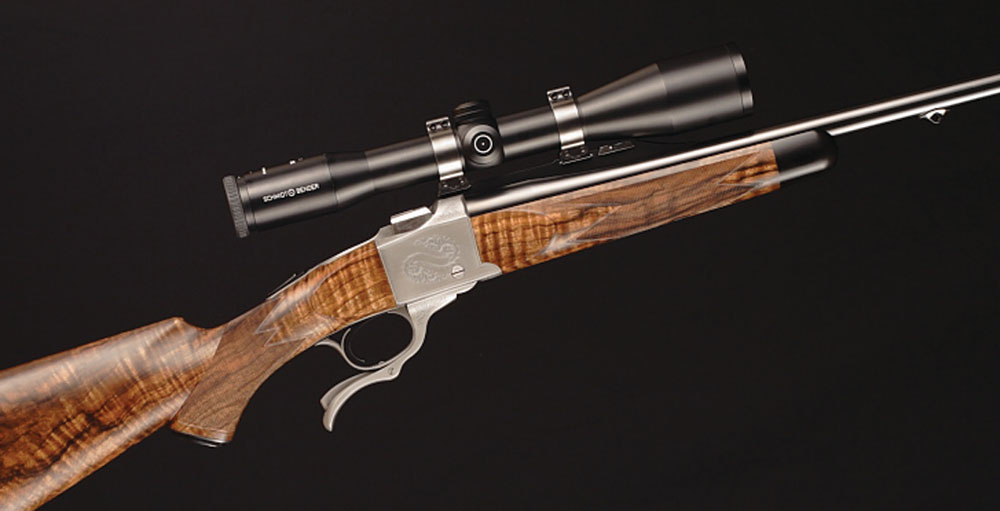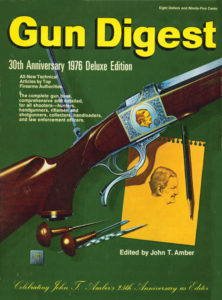

The Ruger No. 1 is a versatile and handy rifle chambered in just about anything you need to take game on this—or any other—continent.

At the 1966 NRA convention in Chicago, a select group of gun writers were shown four prototypes of a new Ruger rifle. It was a classic-style single-shot based on John Farquharson’s falling-block design that was patented in Scotland in 1872. In an article that appeared in the 1967 edition of Gun Digest, the late Roger Barlow eloquently described the appeal of the single shot rifle.
“The man with a single shot rifle, stalking his game skillfully, thoughtfully calculating his range, not just shooting at his quarry but selecting the most effective shot to place that bullet, then carefully aiming and making that one shot count — that man surely is more of a hunter than is the fellow having half a dozen shots available in his repeater.”
The new Ruger rifle was indeed designed to appeal to the traditional sportsman who appreciated and understood the challenge as well as the advantages and disadvantages of one shot. This was another design created by two of Ruger’s top engineers, Harry Sefried and Larry Larson.

Originally the rifle was going to be named the Victorian, due to its 19th century styling, but not long after it went into production, the name was changed. From the beginning, the actions were stamped “No. 1” and that became the official name. (Editor’s note: This Ruger model should always be referred to in print as “No. 1” and not “Number One,” or “Number 1.”)
The design is not a copy of the Farquharson but is a modern take on the action. The falling-block is operated with a lever located just behind the trigger guard. This action is much shorter in length—about 4.5 inches—than those of the various repeating rifle designs, which provides one of the No. 1’s major advantages. It can have a longer barrel than a repeating rifle with the same overall length, and therefore achieve a higher velocity.
The earliest production rifles were referred to as the S22L, S26M and S24H. These were basically barrel-length and weight designations. The variations were later named Light Sporter, Medium Sporter, Tropical Rifle, 1B Standard and others.

The No. 1 has been chambered for a long list of calibers over its almost 50-year history and in several different variations. When the rifle was introduced, the original calibers were the .222 Remington, .22-250, .243 Winchester, 6mm Remington, .308 Winchester, .30-06 and .458 Winchester Magnum. All were offered with either a 22- or 26-inch barrel, except the .458 Win. Mag., which had a 24-inch heavy barrel. The very first No. 1, by the way, was chambered in .308 Winchester and is in the private collection of the Ruger family.
Other variations like the International were later added along with many more calibers. The No. 1 has been offered in virtually every popular American caliber, ranging from the .204 Ruger to the .480 Ruger, and also including several European rounds. Some of the rarest chamberings will require a premium over the values of the standard calibers.
 The earliest No. 1 models were marked with serial numbers with no prefix and these models will also bring a premium. This serial number range goes from 1 to approximately 8437 for rifles produced through the end of 1969. Beginning in 1970, a prefix was added starting with 130-00000.
The earliest No. 1 models were marked with serial numbers with no prefix and these models will also bring a premium. This serial number range goes from 1 to approximately 8437 for rifles produced through the end of 1969. Beginning in 1970, a prefix was added starting with 130-00000.
A major change has taken place in the available calibers for the No. 1. Beginning in 2013, Ruger is chambering the No. 1 in a limited range of calibers. The company announced in its 2014 catalog and on its website that each variation will now be chambered in only one caliber each year, and that caliber will be changed every year.
The Light Sporter for 2014 is being offered only in .280 Remington, the Varminter in .220 Swift, the International in .257 Roberts, the Medium Sporter in 9.3×62, and the Tropical in .450/400 Nitro Express 3-inch. No one knows what this limiting of caliber choices will do to the values of Ruger No. 1s in the future. If you have your heart set on a new No. 1 in one of these particular calibers, don’t wait too long.

Next Step: Get your FREE Printable Target Pack
Enhance your shooting precision with our 62 MOA Targets, perfect for rifles and handguns. Crafted in collaboration with Storm Tactical for accuracy and versatility.
Subscribe to the Gun Digest email newsletter and get your downloadable target pack sent straight to your inbox. Stay updated with the latest firearms info in the industry.

![Best Concealed Carry Guns In 2025 [Field Tested] Wilson Combat EDC X9S 1](https://gundigest.com/wp-content/uploads/Wilson-Combat-EDC-X9S-1-324x160.jpg)


![Best 9mm Carbine: Affordable PCCs [Tested] Ruger Carbine Shooting](https://gundigest.com/wp-content/uploads/Ruger-Carbine-Shooting-100x70.jpg)
![Best AR-15: Top Options Available Today [Field Tested] Harrington and Richardson PSA XM177E2 feature](https://gundigest.com/wp-content/uploads/Harrington-and-Richardson-PSA-XM177E2-feature-100x70.jpg)
